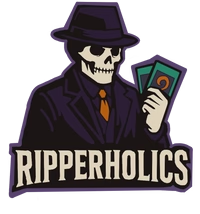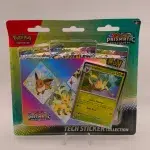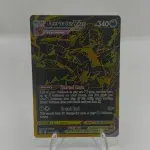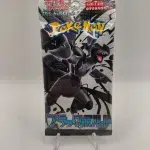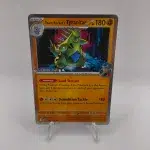How to Spot Fake Pokémon Cards
A collector’s and player’s guide
The Pokémon Trading Card Game is hugely popular, which sadly means counterfeit cards are everywhere — especially for sought-after singles and sealed promos. Knowing how to tell real from fake will help protect both your collection and your wallet.
Below are tried-and-tested checks used by experienced collectors. No single method is foolproof, so combine a few for best results.
1. Inspect Printing and Text
Authentic Pokémon cards have:
- Crisp, clear fonts
- Consistent letter spacing
- No spelling or grammar mistakes
Fakes often have fuzzy or misaligned text, odd font shapes, or poorly translated descriptions. Compare side-by-side with a known-authentic card from the same set whenever possible.
2. Confirm Size and Shape
Standard Pokémon cards measure about 63 × 88 mm (2.5 × 3.5 inches). The corners should be evenly rounded. If a card is noticeably larger, smaller, or has sharper/uneven corners, it’s likely fake.
3. Check the Card Stock and Edges
Real cards use a layered cardstock with a dark (often blue/black) inner layer. Counterfeits can feel:
- Too glossy
- Too flimsy
- Too thick or thin
Look at the card edge under good lighting — authentic cards usually show a consistent colour layer between the front and back.
4. Use the Light Test — Carefully
Shine a bright light from behind the card. Genuine cards typically block most of it, thanks to the opaque inner layer. Many fakes let a lot more light through.
⚠ This isn’t 100% reliable — high-quality fakes can pass, and some older cards may behave differently — so treat it as one piece of the puzzle.
5. Examine the Holo Pattern
Holofoil areas should match the official set’s design:
- Pattern density and direction should be consistent
- Foil should not extend to areas that aren’t meant to be holographic
- The surface shouldn’t appear flat or overly mirror-like
6. Study the Card Back
Look for:
- Centred Poké Ball logo
- Even borders all the way around
- Correct blue colour tone (not too dark, pale, or greenish)
Many fakes have slightly wrong colours or fuzzy outlines.
7. Buy From Trusted Sellers or Pre-Authenticated
The safest way to avoid fakes is to:
- Buy from established TCG retailers with authenticity guarantees
- For high-value purchases, consider graded cards from PSA, Beckett (BGS), or CGC — these are authenticated and sealed in tamper-proof cases
➡ See our graded Pokémon cards and Pokémon singles from verified sources.
8. Watch Out for Counterfeit Slabs
Some counterfeiters fake grading slabs too. To protect yourself:
- Check the label details and printing
- Scan or enter the certification number on the grading company’s official site
- Compare to a known-authentic example of the same cert
Quick Collector’s Checklist
- ✅ Printing crisp, no typos
- ✅ Correct size and corner shape
- ✅ Card stock and edges match authentic feel
- ✅ Holo pattern matches official set design
- ✅ Light test shows minimal glow-through (supporting check only)
- ✅ Seller or grader has strong reputation
Bottom line:
Counterfeit cards are a reality, but with a few quick checks you can avoid disappointment and protect your investment. If in doubt, walk away — or buy from sellers who guarantee authenticity.
